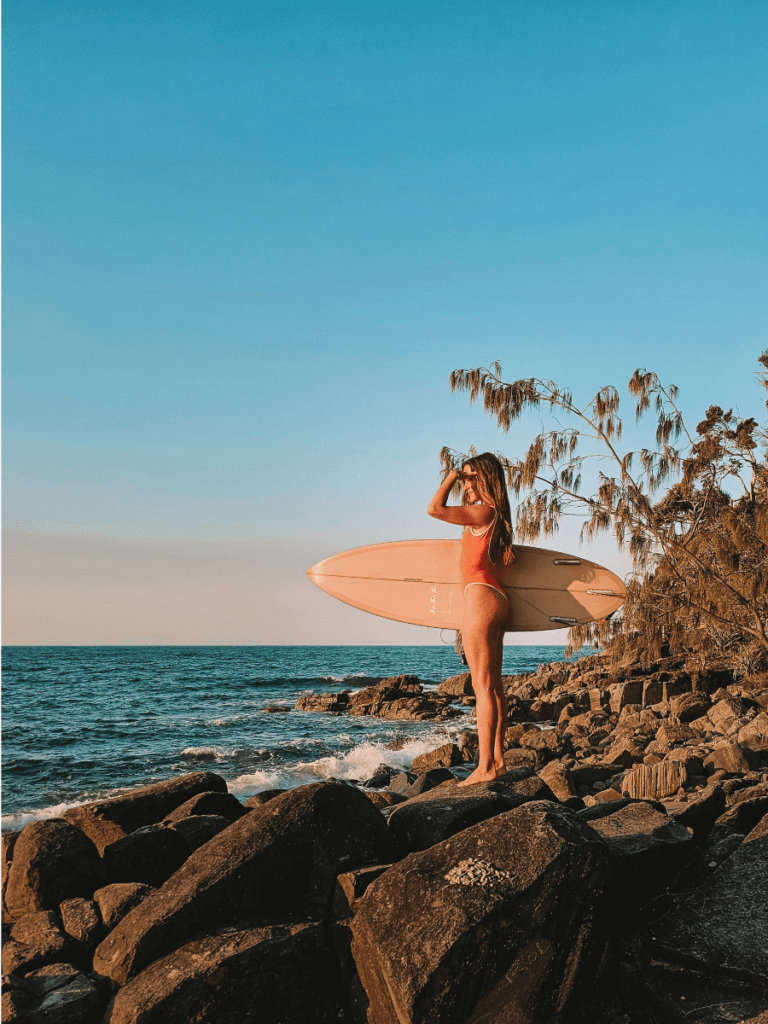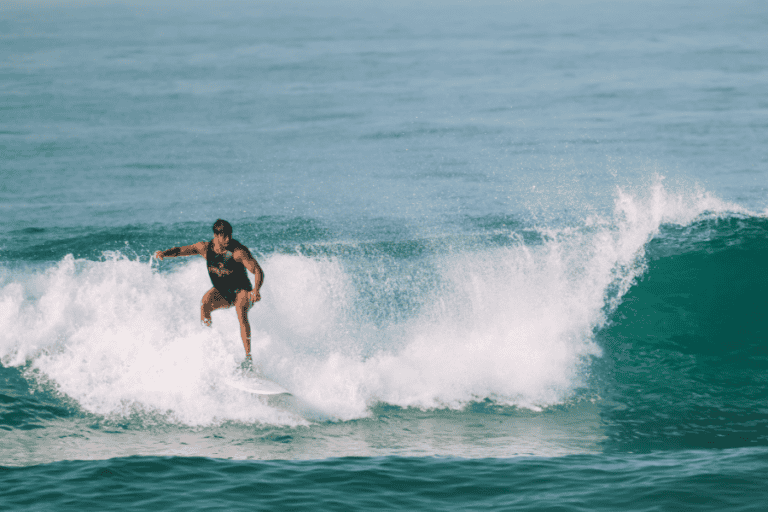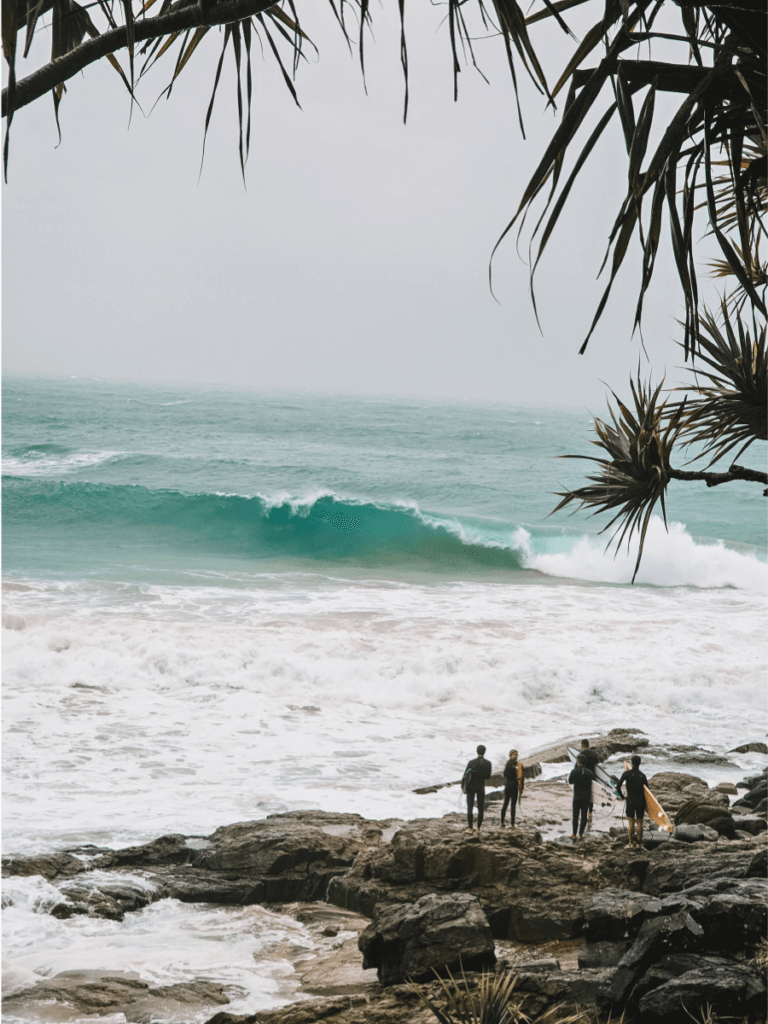How Tides Affect Surfing: A Surfer’s Essential Guide
This article is all about tides and their impact on surfing.
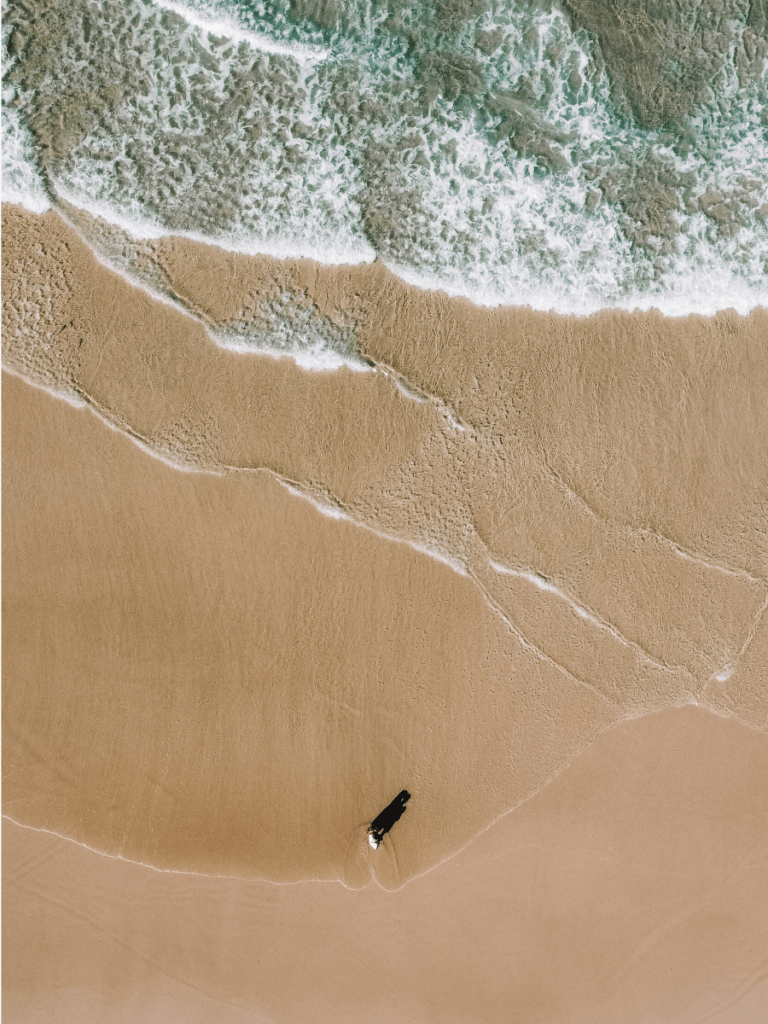
Before I started surfing in my mid-20s, I had barely any exposure to the topic of tides. Growing up far from the sea, my knowledge of tides was limited to what I learned in elementary school physics—and that was many years ago. I never would have guessed how relevant tides could become when surfing.
What once seemed like a dry, purely physical concept has become something I find incredibly fascinating. I’m grateful to now understand the connections, as I believe tides are essential knowledge for any water sports enthusiast. Tides are not just important for advanced surfers when it comes to choosing the right time and spot for a session. Even beginners should familiarize themselves with the basics: if you’re in the water at the wrong time, you might find there aren’t even small foam waves to practice on.
Tides play a crucial role in surfing and in choosing the right surf spot. (Learn in this article how to properly read and understand a surf forecast.)
In this article, I’ll explain everything you need to know about tides as a surfer—clearly and simply, from surfer to surfer, without bogging you down with too much physics.
1. What are Tides?
Tides describe the interplay of high and low tides that can be observed at sea.
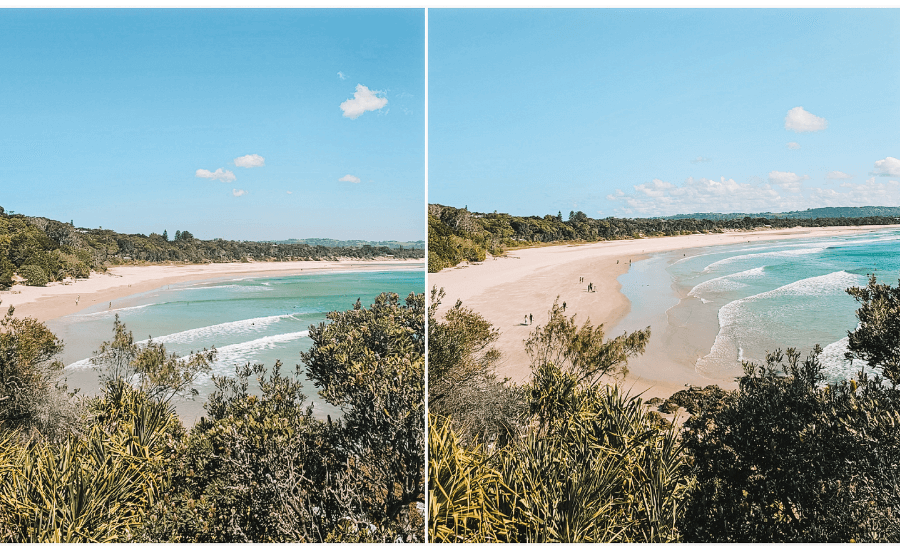
Important Terms:
- Ebb and Flow describe periods of time.
- High Tide and Low Tide, on the other hand, are specific points in time.
- Flow describes the period when the water rises (from low tide to high tide).
- Ebb describes the period when the water goes down (from high tide to low tide).
- Tidal Range is the difference in height between high tide and low tide.
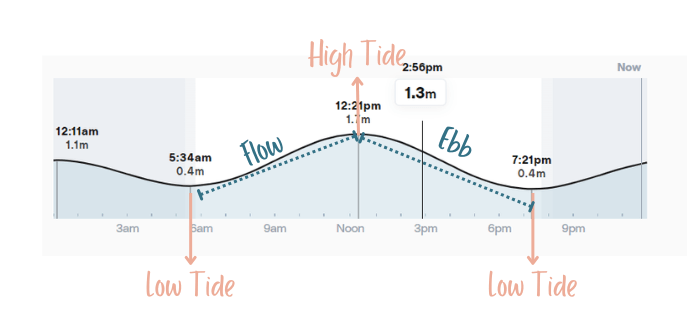
2. How do tides form?
To understand how tides form, it’s essential to take a brief look at the forces acting between the Earth, Moon, and Sun. Tides are caused by gravitational and centrifugal forces.
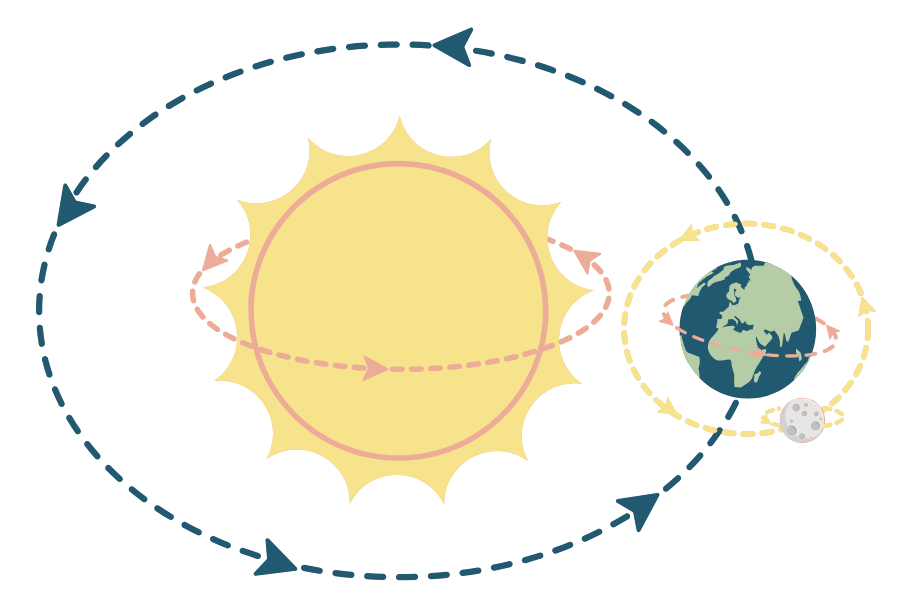
Gravitational Force:
Gravitational force refers to the attraction between two masses, such as the Moon and Earth. The larger an object’s mass, the stronger its gravitational pull. At the same time, the farther apart two objects are, the weaker the force becomes.
Fliehkraft:
If only gravitational force were at play, planets would collide and destroy each other. That’s where centrifugal force comes in. This force arises from the rotational movement of the Earth and Moon around a shared center of mass. Centrifugal force acts outward from the Earth, away from the center of rotation, and is also called the centripetal force.
Tides result from the interplay between these two forces:

- On the side of the Earth facing the Moon, the Moon’s gravitational pull attracts water, forming a tidal bulge (high tide). Here, gravitational force exceeds centrifugal force.
- On the opposite side of the Earth, centrifugal force dominates over the Moon’s gravitational pull, causing another tidal bulge. This outward “slingshot” effect creates a second high tide.
Frequency of High Tide and Low Tide:
The transition from high tide to low tide takes just over six hours. A full tidal cycle—from high tide to the next high tide or low tide to the next low tide—lasts approximately 12 hours and 25 minutes.
Because the Earth rotates once every 24 hours, these two tidal bulges move around the planet, resulting in two high tides and two low tides per day. Due to the extra 25 minutes per cycle, tides shift by about 50 minutes daily, which is why surfers need to check the tide calendar daily.
Spring tide vs. Neap tide
The Sun also influences tides, though its gravitational force is weaker than the Moon’s due to the greater distance. The arrangement of the Sun, Moon, and Earth affects the tidal range (the difference between high and low tide). A distinction is made between Spring Tide and Neap Tide:
Spring Tides:
During full moons and new moons, the Sun, Moon, and Earth align. Their combined gravitational forces amplify the tides, resulting in a greater tidal range.
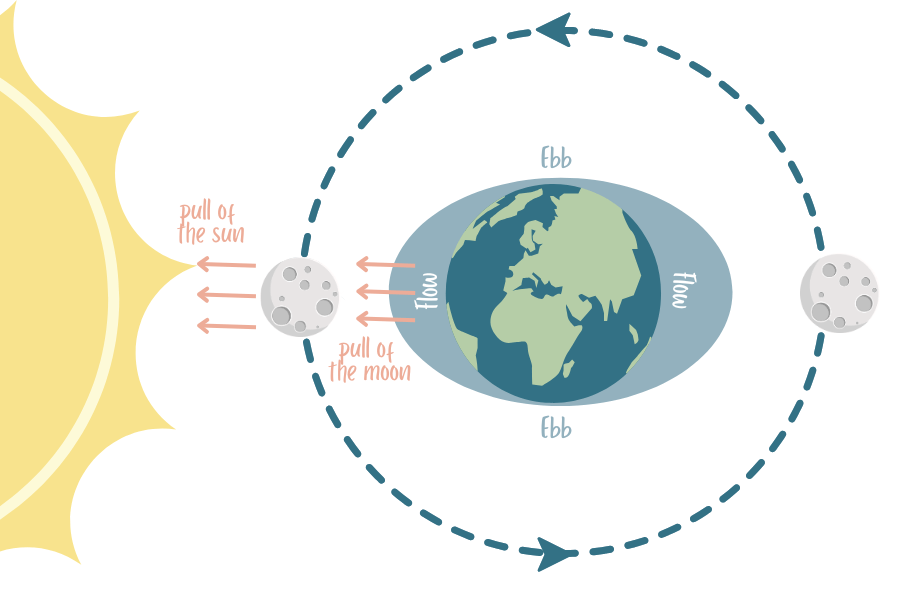
Neap Tide:
During the first and last quarter moons, the Sun, Moon, and Earth form a 90-degree angle. Their gravitational forces partially cancel each other out, leading to smaller tidal ranges.
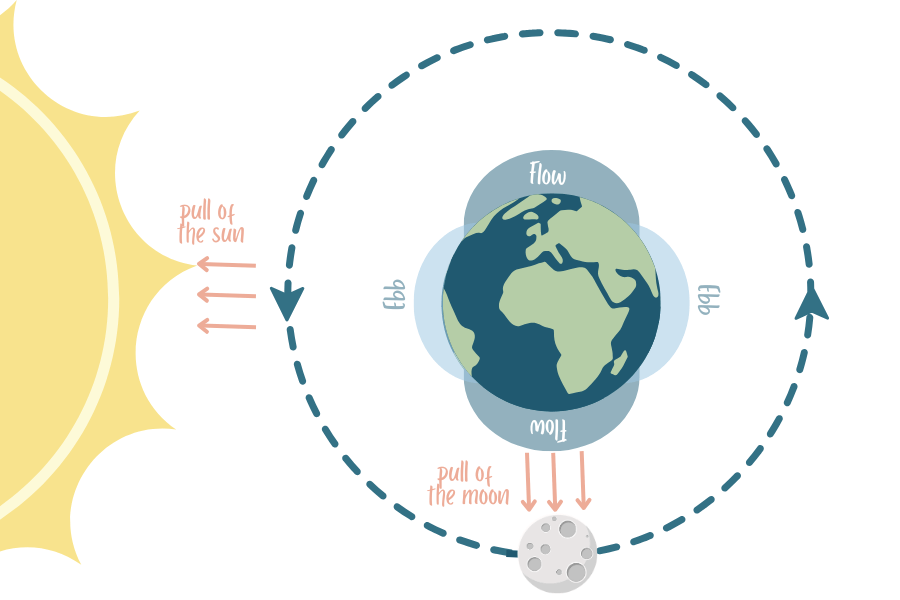
Seasonal Influence
The strength of tides also varies with the seasons. Tidal ranges tend to be larger in spring and autumn when the Earth is closer to the Sun.
Coastal Influence
The extent of tidal variation depends on the shape of the seabed and coastline:
- Steep coastlines: Smaller differences between high and low tides.
- Shallow coastlines: Larger differences.
Tide Calendars and Surf Forecasts:
Tide calendars, which are often part of surf forecasts (e.g. Surfline), indicate the times of high and low tides and show the tidal range.
There are also numerous tide watches available, allowing you to track the tides. A popular accessory for surfers!
Tides significantly impact wave height and breaking patterns. The ideal time for surfing at a particular spot depends on water levels and the seafloor’s structure.
The greater the tidal range, the more pronounced its effect on wave conditions. Therefore, it’s crucial to consider the tide phase and timing when choosing a surf spot.
In the following tide graphs, you can clearly see the differences in tidal range
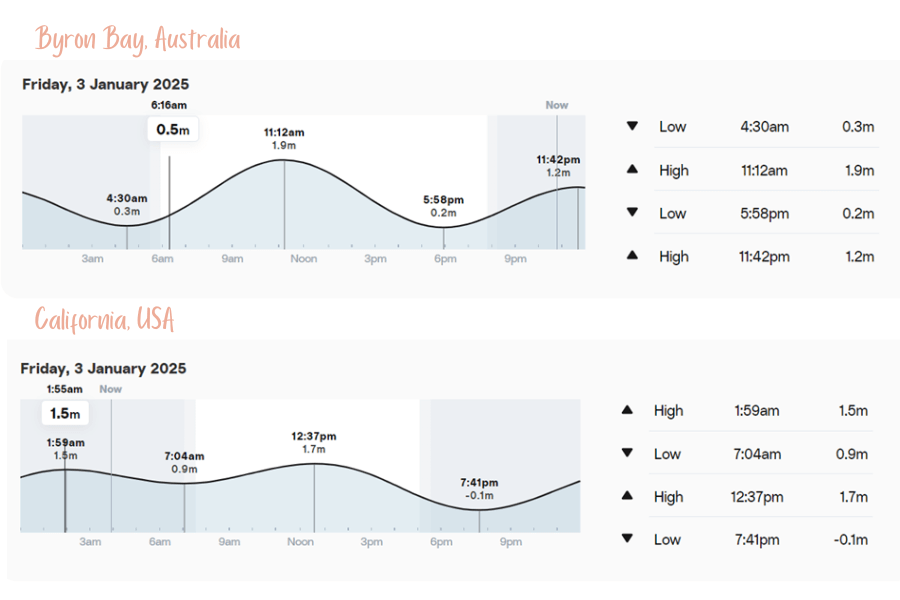
During the third and fourth hours of a tide cycle (after the start of high or low tide), water movement is at its peak, which can result in stronger currents.
3. How Do Tides Affect Waves?
Before diving in: To better understand why and how waves break, I recommend checking out my article on Swell- und Wave Formation.
As mentioned earlier, tides significantly influence waves and can determine whether surfable waves are even present.
Let’s illustrate the effects of tides on waves with an example: We’ll take a 1-meter-high wave and compare how it behaves at the same beach during low tide, mid tide, and high tide.
Rule of thumb: A wave breaks in water that’s about 1.3 times its height. For instance, a 1-meter wave breaks at a depth of around 1.3 meters, while a 1.5-meter wave breaks at approximately 1.9 meters.
Low Tide
At low tide, the wave energy from deeper water hits the first sandbank directly. This abrupt slowdown causes the wave to break hollowly over the sandbank and then roll out as a long whitewater wave.
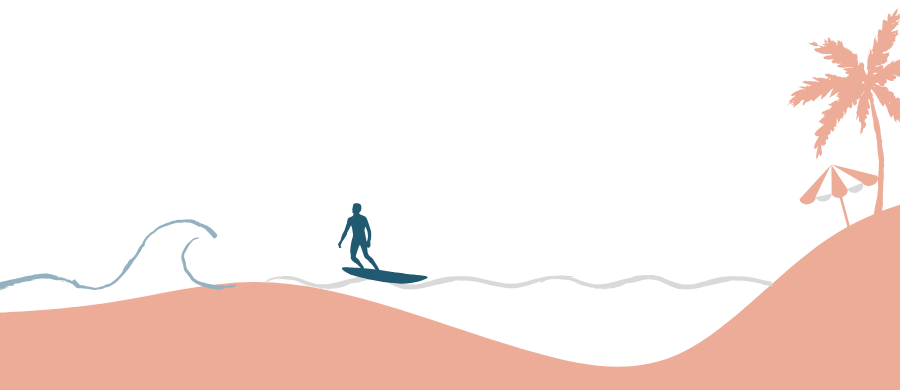
Depending on the wave size and the shape of the sandbank, the wave itself may be difficult or impossible to surf. However, the whitewater is ideal for beginners to practice.
Mid Tide
About three hours later, during mid tide, the water level rises. Waves now hit the same sandbank more gently, breaking less hollow and more gradually.

These conditions are ideal for intermediate surfers, as the waves are less powerful and offer more time to stand up.
High Tide
Another three hours later, at high tide, the sandbank is barely impacted by the wave energy. The wave is only slightly slowed down and tends to “spill through” before continuing toward the shore and breaking as a shore break.
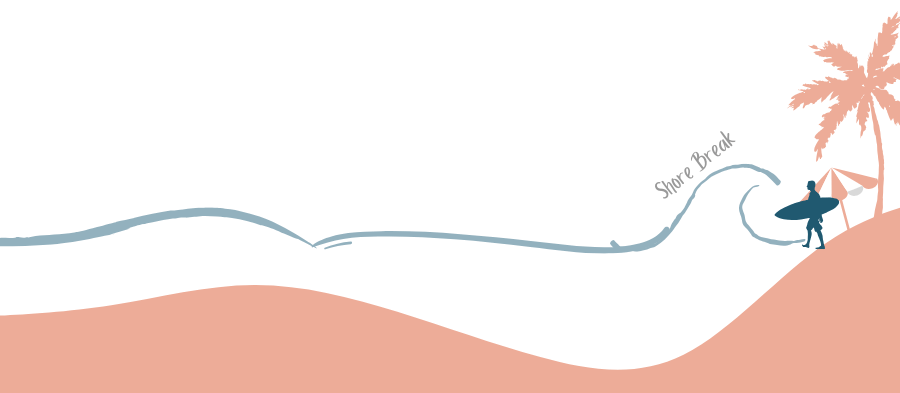
Shore breaks occur when waves form far offshore but break near the beach. These waves are often powerful and break quickly, as the water flowing back to the sea is pushed upward by the incoming wave. Shore breaks at high tide can be risky—if you’re not careful, you might crash your board directly into the sand. While not impossible to surf, shore breaks are generally reserved for advanced surfers.
If the wave is larger, it might break before “spilling through.” The shore break becomes even more powerful with bigger waves, making it much harder to paddle out into the lineup. These conditions are unsuitable for beginners.
Tidal Push:
A tidal push occurs when rising tides add more water to the shore. This energy combines with the wave energy, resulting in more powerful waves.
Every Surf Spot Is Different!
The way waves break is heavily influenced by the seabed at each surf spot. It’s a good idea to check out a surf spot during low tide to identify sandbanks, rocks, or other underwater obstacles.
Some reef breaks, for example, may be completely unsurfable at low tide because the water is too shallow, increasing the risk of hitting the reef.
Key Take Aways on Wave Breaking
Beach Breaks (Sand Bottom):
- For smaller waves, it can be worth surfing during outgoing tides (e.g., mid tide to low tide) since waves at high tide often “spill through” and are unsurfable.
- Larger waves tend to break more gently during rising tides, which is advantageous for beginners and intermediates.
- Watch out for shore breaks at high tide when entering the water.
- Beginners are well-suited for small swells and beach breaks, as they can practice with long whitewater waves during low tide and land on a softer sand bottom.
Point- und Riff Breaks (Rock or Coral Bottom):
- These spots are highly dependent on the seabed. Ask local guides for the best conditions.
- At low tide, these spots are often unsurfable due to shallow water, increasing the risk of hitting the bottom.
Summary
Tides are caused by the interplay of gravitational forces from the Moon and Sun and the centrifugal force of the Earth. This interaction results in two high tides and two low tides daily, shifting by about 50 minutes each day.
Tides have a significant impact on how waves break and their quality. Understanding how tides affect conditions at different surf spots takes experience. Some spots work best at high tide, others at low tide, while some remain unaffected by tides. For example, at high tide, a wave might only break as a shore break, or at low tide, a reef spot may become unsurfable.
The effect of tides depends on the Moon-Sun-Earth alignment (spring or neap tides), the coastal shape, and the tidal range. To get the most out of your surf session, always consult tide calendars and surf forecasts!
This post was all about Tides and their impact on surfing.


